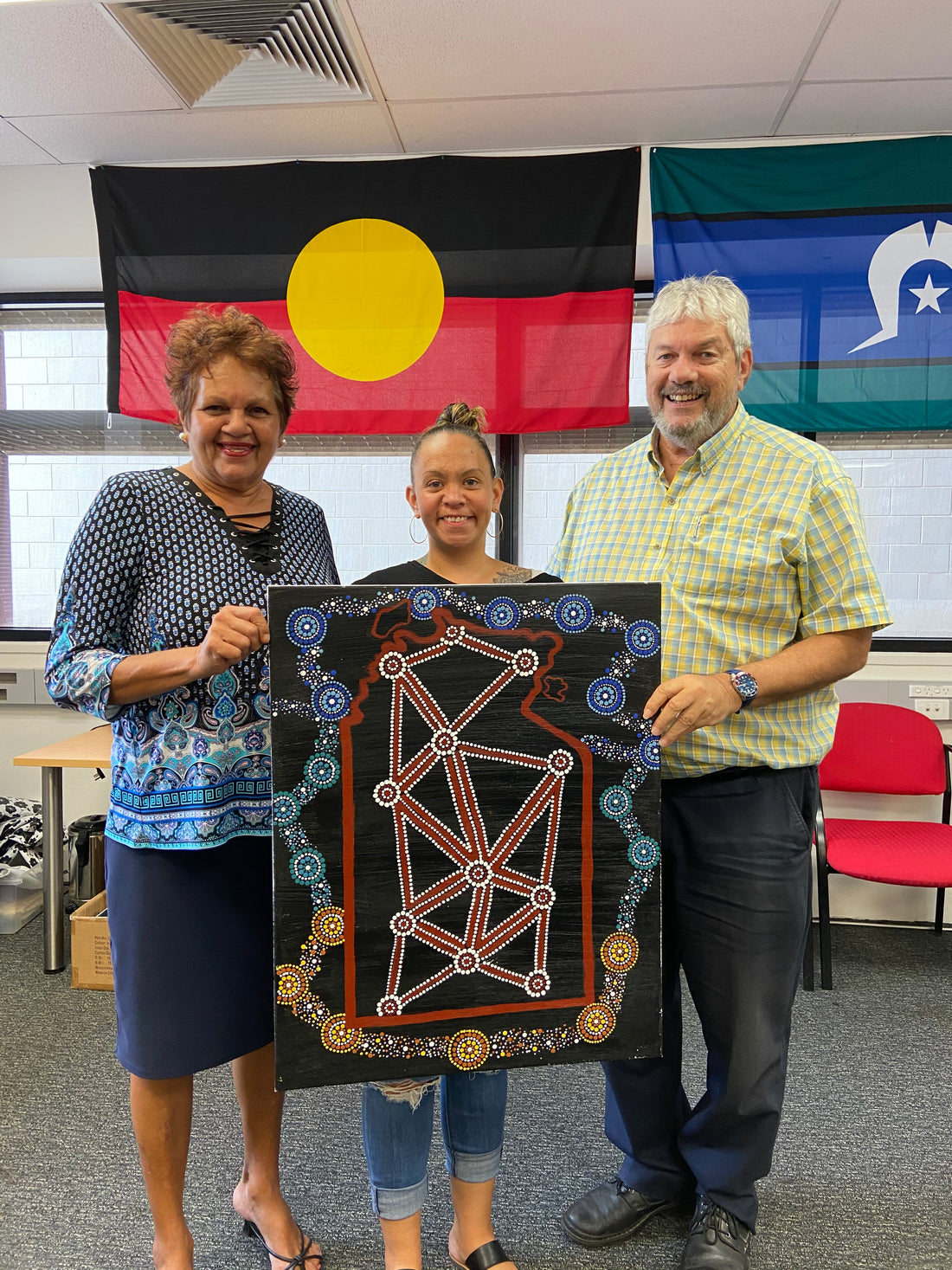
Tali Katu Commissioned Artwork & Custom Uniform - APONT
Share
NT Generational Strategy
The inspiration for this Artwork came to me while I was at work with access to only pastels and butchers paper.
The very rough 1st draft from What emerged while tuning into my Grandparents, Bob and Amy Randall.
The artwork is based on parts of their stories as members of the Stolen Generations. As an Aboriginal Woman, my connection to place and family is paramount to my identity, which speaks to an ancient, and very intricate system, known as “Kinship”
I used more traditional colours as a way to honour my big daughters (what you will know as Great grandmothers) that had their children removed from them, as they were Traditional Aboriginal Women from the Central Australian region.
My Tjamu, born at Middleton Ponds, was taken from Angus Downs station as a small boy, between the ages of 5-7. My Grandmother, born at and taken from Aileron. Both being placed into “The Bungalow” on Arrernte country, then moved to the Top End of Australia and placed on Croker Island.
When my Tjamu grew, he decided to find his mother and country. Along his journey, he found my Grandmother's country and was instrumental in the reunion between her and her mother.
There were so many children taken, that every community Tjamu stopped at, he was claimed by heartbroken Mothers, families and embraced by communities.
My Tjamu never met his mother, but along the way discovered that he belonged to 3 countries; Yankunytjatjara, Pitjantjatjara, and Luritja. His family, my family connection extends beyond blood, and is tied up to all that is in existence throughout the country.
The small black dots represent his journey throughout the NT when trying to find his Mother and country, and also represents the marks left today, and although smudged, the country holds the stories in the footprints that journeyed throughout.
The circles represent the community, the family and the child that was removed and you will notice a rippling of larger circles, which is the impact of removing someone or something that belongs to country - this style of artwork usually speaks to country and water - which gives us life and also sustains life.
As Aboriginal people, we do not see ourselves as being separate from the land, and if we have been disconnected from country, we often find that country calls us home.
I hope that in sharing a small part of my family history, APONT can create policies that influence the removal of Aboriginal children and really look to minimise the impacts of trauma that has been and that are continuing to be created through disconnection.
